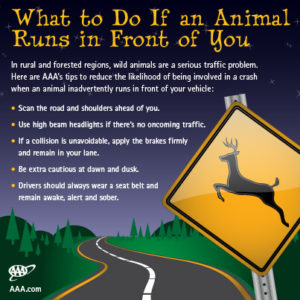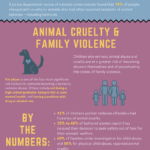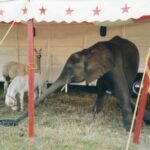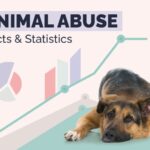It is a grim reality that animal-related incidents on roadways occur with disturbing frequency. When a driver runs over an animal, the immediate emotional response can often be one of shock, fear, or even panic. But the question remains: What should one do if faced with such a distressing situation? This article delves into the moral, ethical, and legal implications of leaving the scene after such an event. Are we merely observers in a complex interplay between man and nature, or are we responsible actors obligated to respond?
First, let us consider the emotional ramifications for both the driver and the animal. Imagine the heart-wrenching scenario where an animal, perhaps a deer or a raccoon, bounds unexpectedly into the roadway. Despite our best intentions and reflexive actions to swerve or brake, the outcome may be unavoidable. As we drive away, our conscience grapples with an unsettling question: Did we do enough? The emotional toll can weigh heavily, nourishing the seeds of guilt and regret that may linger long after the incident.
The ethical implications of running over an animal and driving off are equally profound. When we enter a vehicle, we embark on a journey through shared spaces, spaces that are home to countless creatures. Animals are sentient beings deserving of a certain level of respect and empathy. Abandoning the scene after an accident not only disregards the welfare of the animal but also shuns our ethical obligations to exhibit compassion. Are we prepared to confront the ugly truth that our actions—or lack thereof—can cause unnecessary suffering?
Furthermore, there are legal considerations to take into account. Depending on the jurisdiction, failing to stop after such an incident may be classified as a misdemeanor or even a felony. Laws vary significantly, but many places mandate that drivers stop and render aid when involved in an accident, regardless of whether the incident involves a person or an animal. Ignorance of these regulations does not exempt one from legal liability. Herein lies a challenge: navigating the treacherous waters of law, morality, and personal responsibility can be daunting.
So, what should you do if you find yourself in the unfortunate predicament of having struck an animal? The first step is to ensure your own safety. If possible, safely pull over to the side of the road, turn on hazard lights, and assess the situation. If it is safe to do so, attempt to determine the degree of injury sustained by the animal. If the animal appears to be in distress, one might contemplate whether it is feasible to call animal control or a local veterinarian.
Next, report the incident to the relevant authorities. While this might feel counterintuitive, reporting the event is critical for several reasons. Law enforcement may be able to provide assistance, and they are equipped to handle such situations. Additionally, informing authorities aids in the compilation of data related to animal-related accidents, which can contribute to future safety measures. After all, awareness is the first step toward change.
Consider the ecological aspect of this incident. Many of us desire a harmonious coexistence with nature, yet such encounters often reveal the friction between human activities and wildlife. The aftermath of running over an animal ignites dialogue about wildlife corridors and road signage, prompting deeper contemplation about how to diminish such tragic occurrences. Could there be better signage? Should wildlife crossings be implemented? It is essential to recognize our role in advocating for measures that mitigate the risk of these events in the first place.
Reflecting on this topic leads us to a troubling yet essential inquiry: How can we forge a path towards greater awareness and accountability? One practical approach is education. By disseminating information about the likelihood of wildlife interactions and how to respond appropriately, we can foster greater empathy and responsibility among motorists. Local communities can host workshops, instructing drivers on defensive driving techniques to avoid wildlife collisions and the appropriate protocols to follow if such mishaps do occur.
Moreover, involvement in local advocacy groups focused on animal welfare can amplify these discussions into broader societal change. Consider partnering with organizations dedicated to wildlife conservation, which can champion initiatives aimed at enhancing road safety for both animals and humans. It’s easy to think these issues are someone else’s job, but collective action can yield substantial results.
As we navigate the roads of life, let us remember that our decisions echo far beyond the immediate moment. The responsibility to respond with compassion and empathy lies not solely with the individual; it is a communal duty to foster a world where humans and wildlife can coexist in a manner that is respectful and empathetic. The next time you encounter a scenario involving an animal on the roadway, pause to consider the profound ethical implications, the legal obligations, and the collective responsibility we share. The challenge we face is not merely one of reaction but of proactive engagement in preserving the delicate balance of our ecosystems, thus ensuring a kinder world for all sentient beings.










